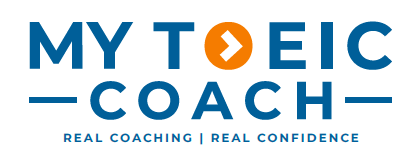TOEIC Part 2: How to Handle the Question-Response Section with Confidence
Improve your TOEIC Listening Score with Easy-to-Follow Tips
In TOEIC Listening Part 2, you’ll hear one question or short statement, then three possible responses.
No text. No repeats.
That’s why it feels fast — especially if your score is in the 400–600 range.
But with the right habits, Part 2 can go from “tricky” to one of your highest-scoring sections.
1 – Understand the Real Question
Not every question needs a direct answer.
If someone says, “Did you call Mr. Tanaka?” the best choice might be: “I left him a message this morning.”
It fits the situation — even without “Yes” or “No.”
Don’t chase single keywords. TOEIC will repeat them in wrong answers to mislead you.
2 – Let the First Words Guide You
The start of a sentence tells you a lot:
What / Where / When → Expect a place, thing, or time.
How long → Expect a time/duration.
Yes/No questions → The correct answer might explain, give a reason, or politely reject — not just “Yes” or “No.”
3 – Think in English, Not Japanese
You don’t have time to translate in your head.
Understand the meaning as you hear it.
Be alert for words that sound the same but mean different things (right = correct vs. right = direction).
4 – Don’t Fall for Familiar Sounds
A choice might contain a word or phrase you know — but if it doesn’t match the meaning, it’s wrong.
TOEIC loves “distractors” that sound nice but don’t fit.
5 – Use Functional Phrases
Phrases you’ve heard hundreds of times — “Let me check,” “That depends,” “I’ll take care of it” — often appear here.
Match the tone: formal voices need formal answers.
6 – Stay Fully Present
No text. One listen. Short gaps.
Train at real test speed — not slowed audio.
When one question ends, reset your focus immediately for the next.
7 – Always Choose
No penalty for wrong answers.
If unsure, pick the most natural-sounding reply. Usually, two answers will feel wrong, one will feel okay — that “okay” one is often right.
8 – Practice with Purpose
Listen to TOEIC-style audio at full speed.
Check the script afterwards.
Ask: What type of question was this? Why was this answer correct?
Repeat until the connection between question type → natural answer becomes automatic.
You can train your brain to catch meaning in seconds.
Stay calm, listen with purpose, and answer with logic — not guesses.
For more strategies and resources to strengthen your Listening skills, visit the English Library Collection and sharpen the exact skills Part 2 tests.

